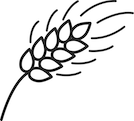Overdose Prevention and Response Toolkit (2 credit hours)
Program Summary: This course offers basic overdose education for recognizing and responding to an opioid overdose. The course highlights overdose causes, risks, signs, and prevention. Opioid overdose reversal medications are discussed and overdose response steps are given. This course is intended to complement and not replace overdose prevention and response training.
This course is recommended for social workers and counselors and is appropriate for beginning and intermediate levels of practice.
Reading #1: Overdose Prevention and Response Toolkit Publisher: SAMHSA
Reading #2: Naloxone DrugFacts Publisher: National Institute on Drug Abuse
Course Objectives: To enhance professional practice, values, skills and knowledge by examining opioid overdose prevention and response.
Learning Objectives: Describe opioid overdose causes, risks, signs, and prevention. Describe the role of opioid overdose reversal medications. Identify overdose response steps.
Review our pre-reading study guide.
G.M. Rydberg-Cox, MSW, LSCSW is the Continuing Education Director at Free State Social Work and responsible for the development of this course. She received her Masters of Social Work in 1996 from the Jane Addams School of Social Work at the University of Illinois-Chicago and she has over 20 years of experience. She has lived and worked as a social worker in Chicago, Boston, and Kansas City. She has practiced for many years in the area of hospital/medical social work. The reading materials for this course were developed by another organization.





